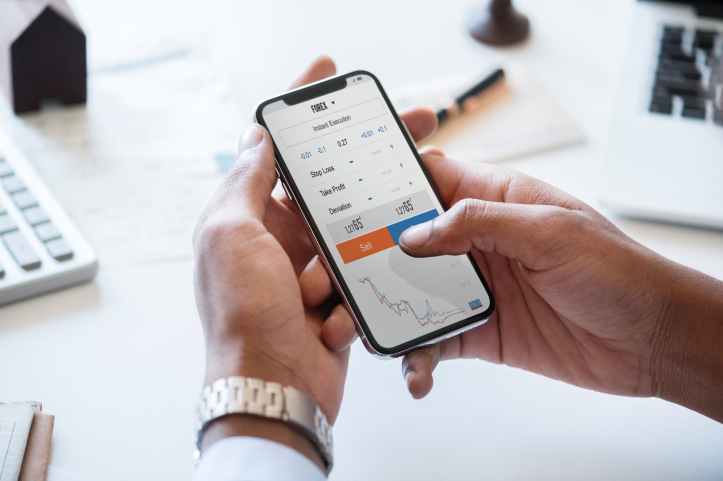Do you remember the last time you got a door-to-door salesperson knocking at your door, asking you to buy something at a discounted price?
It’s probably been a while, and today, getting a salesperson at your door is extremely rare. This is because, despite people thinking otherwise, the sales sector has progressed beyond door-to-door selling and cold calls; these traditional methods have been replaced by new, dynamic, productive practices, like Social Selling.
What is Social Selling?
Basically, social selling uses social media to do what door-to-door salespersons did, no, not bore you with product features you have no need for; social sellers find and target prospects, and since it’s done via the social media, it’s a lot easier for them and a lot less annoying for you.

The reason door-to-door selling didn’t work was because the salespersons didn’t try to get to know you and always tried to get you to know their products (which is not what selling is), but social selling changed this aspect of selling completely.
With social selling, the salespersons build relationships with buyers, provide prospects with valuable informatio of products that are useful to them, engage potential buyers while tactfully persuading them to take action.
Why Choose Social Selling?
The essence of selling is forming a relationship with your potential buyers before trying to sell them anything, which is exactly what social selling allows you to do. Not only does this allow you to complete your sales targets using half the time, efforts, and resources, it will also get you a loyal customer base that will stay with your brand long after your transaction is done.
The people who fall under the age group of 18 to 34 years are both, the largest demographic on social media and decision-makers in majority of the B2B companies (almost 46%, according to Google). This means that a large chunk of your target audience is on social media as active, involved members. Social selling gives you the opportunity to connect with all these potential buyers digitally, something traditional sales methods don’t give you.
All these potential buyers on social media engage in a practice, collectively called “social buying”. Essentially, they use aids like social search and social listening to look for sellers, research them, and form opinions about them before they even come in contact. So, if you don’t show up in their social buying process, you are missing out on lots of potential sales.

Most of your competitors are already onboard with social selling and gaining lost of leads thanks to it. If you’re still stuck using the traditional methods for selling, then they will leave you in the dust. Starting social selling is a guaranteed way of getting on par with the ones using it already and ahead of the ones who aren’t.
Social Selling Stats
Now, on to some interesting and convincing stats:
According to “2014 State of B2B Procurement Study” by Accenture, 94% buyers do some form of research before making a business purchase and 55% do so for at least half of their purchases.
SiriusDecisions found that 67% of the buyer’s journey is now done digitally. But this in no way means that a salesperson is not involved in this process. They’ve also debunked that misconception that you should let they buyers find you when they are ready. In fact, LinkedIn’s study on social selling found that nearly 64% of B2B buyers appreciate it when a sales person contacts them with relevant information and opportunities when they need it (when they express a challenge related to your expertise).
Linkedin also found that 75% of B2B executive buyers use social media to make purchasing decisions. A study by Demandgen shows that almost 53% of the buyers use social media as a research tool.
If all of the above stats weren’t enough to make you pro-social selling, here is what Jamie Shanks of Sales for Life found: “On average – for every $1 a company puts into a sales rep for Social Selling training, that sales rep will make the company $5 within 180 days!” So, whatever amount you invest in social selling, you will get back 5 times as ROI.
What You’re Not Doing Right

So, it’s obvious that social selling is a good thing, a great thing, in fact, to practice. But most companies don’t get the expected results out of it — mostly because they’re not doing it right.
1. Don’t “Make It Up As You Go”
According to Sales for Life, only 8.5% of social sellers have a program that’s fully integrated into their sales process and stack. Most of them are simply “making it up as they go” while only 22% reps feel that they’re competent enough for that.
2. Fix Your Profile
Another mistake made by business it that they don’t work on their social profile. A Sales for Life study found that 11% of social media profiles still have stock ‘avatar’ images (this makes them look unprofessional and untrustworthy) and 95% of businesses on LinkedIn are using business card type headlines as their profiles that makes them look dull.
Not dressing up your profile and expecting good leads is akin to showing up to a professional meeting wearing wrinkled, casual clothes and expecting it to go well.
Another thing found in this study is that most (61%) summaries look like resumes, only 6% of the summaries offer any sort of value to prospects, while 33% have simply left the summary section blank. So if a prospective buyer does, somehow land up on their page, they have nothing to keep them interested.
And even if people do get interested, they have no way to contact the business; only 47% have any contact information available on their profile, and merely 19% provide their twitter information.
3. Reach Out to Your Prospects
Sales for Life also found that only 52% businesses have less than 500 connections on Linkedin, and 39% of the businesses are in less than 10 groups, while only 3% were actively sharing their content to potential buyers. On LinkedIn, connections and groups are how you connect with people and engage with them. If you’re not actively reaching out to them, they won’t come looking for you.

Social selling, much like door-to-door selling, brings in revenue and leads but, unlike door-to-door selling, it does so with less wastage of resources, less displeasure for your prospects, and less hassle for salespersons.
With social selling, a salesperson gets to interact and engage with prospects at a point in their buyer’s journey where they are still open to a new approach, not just a new product, while door-to-door forced products on customers who probably weren’t interested at all. This sales method also gives them a means to generate, qualify and nurture leads, and demonstrate value effectively and early.
I will be conducting a one-day workshop on ‘Social Selling – Make 2018 the Best Year in Business‘ on 16th June, 2018, specially for marketers, VPs, CEOs, and business owners. This workshop is been done in association with Tie Pune. This workshop will guide professionals on not only how to use social media channels, but also how to you to use them making business sense. Click here to know more and register.
[…] strategy is no child’s play. Additionally, in an increasingly content-greedy information age, B2B Marketers are forever playing catch up with their strategy’s content requirements. This is where hiring a […]
[…] strategy is no child’s play. Additionally, in an increasingly content-greedy information age, B2B Marketers are forever playing catch up with their strategy’s content requirements. This is where hiring a […]